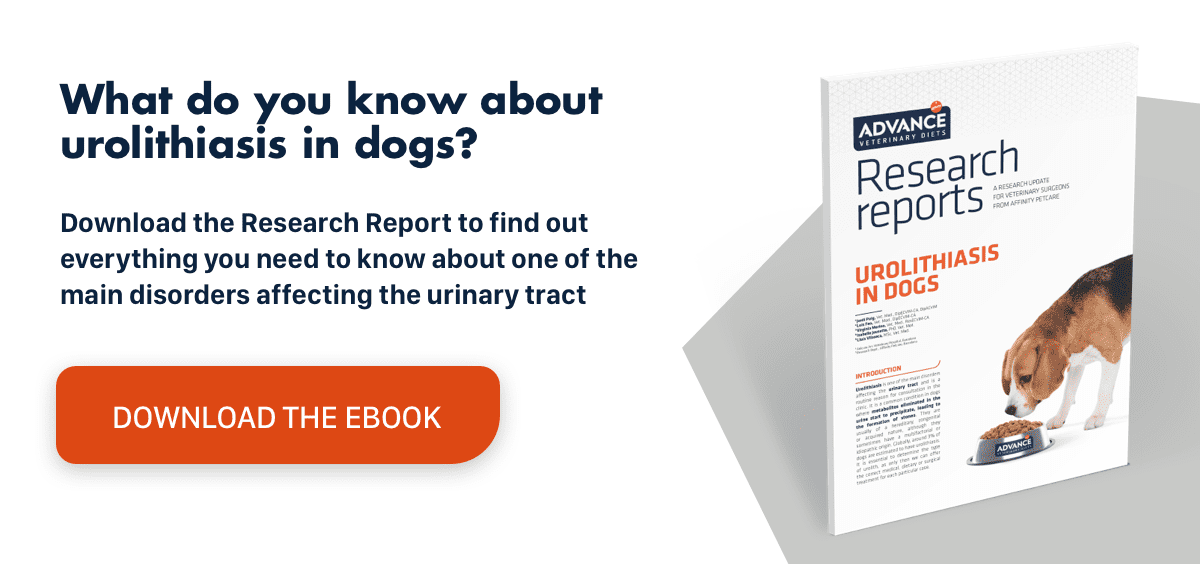Vaginal prolapse: a brief description
The most characteristic feature of vaginal prolapse is the presence of a pinkish mass protruding through the dog’s vulva. Urinary complications are rare, but anuria, dysuria or pollakiuria are problems that can occur if the urethra is compressed due to extrusion of prolapsed tissue. The patient may suffer tenesmus and mating could prove difficult or impossible. In terms of behaviour, affected females will display discomfort, anxiety and constant licking of the affected area.
The condition is more commonly encountered in young females of large and brachycephalic breeds, suggesting a certain hereditary component.
Vaginal prolapse is classified according to the degree of protrusion as:
- Type 1: mild-to-moderate eversion of the vaginal mucosa from the cranial–ventral vaginal floor to the opening of the urethra, contained within the vaginal lumen and vestibule. The visible mucosa is pale pink, soft and shiny.
- Type 2: eversion of a tongue or pear-shaped portion of the vaginal mucosa through the lips of the vulva. The prolapse originates from the floor and sides of the vaginal wall and is reducible in many cases. When the condition becomes chronic, the tissue is dry, pale and damaged.
- Type 3: the prolapsed tissue surrounds the entire vaginal opening in the form of a doughnut, and is usually accompanied by the externalisation of the urethral opening. The tissue is visibly dry, ulcerated, fissured, necrotised and damaged (self-mutilation due to continuous licking, rubbing against objects, etc.).
Other underlying diseases must be ruled out such as vaginal or vulvar tumours, clitoral hypertrophy, urethral tumours, uterine prolapse, true vaginal prolapse (vaginal tissue displacement with involvement of abdominal organs).
TREATMENT OPTIONS FOR VAGINAL PROLAPSE:
- Conservative: this is the choice for pregnant females or if the owner is opposed to surgical techniques. The prolapsed tissue must be kept clean, moist and protected to prevent trauma and lesions. The goal is to prevent infection while waiting for the inflammation to subside after the follicular phase of the menstruation cycle. It is not the ideal treatment as the clinical picture will reappear with each oestrus.
- Ovariectomy/ovariohysterectomy: the treatment of choice for nonpregnant females with uncomplicated type 2 or type 1 vaginal prolapse in order to prevent recurrence. The best time to perform the operation is during anoestrus as there is less risk of bleeding. If the vagina is prolapsed during oestrus, conservative management should be implemented until surgery.
- Resection: with or without ovariohysterectomy. This is indicated when:
- the prolapsed mass is severely damaged and/or necrotic;
- the patient is unable to urinate; or
- an ovariohysterectomy, in cases of type 3 chronic prolapse, and the consequent elimination of the oestrogen stimulus prove insufficient to curb oestrogen levels.
The prognosis is very favourable if these treatments are implemented, even when there is tissue necrosis.

